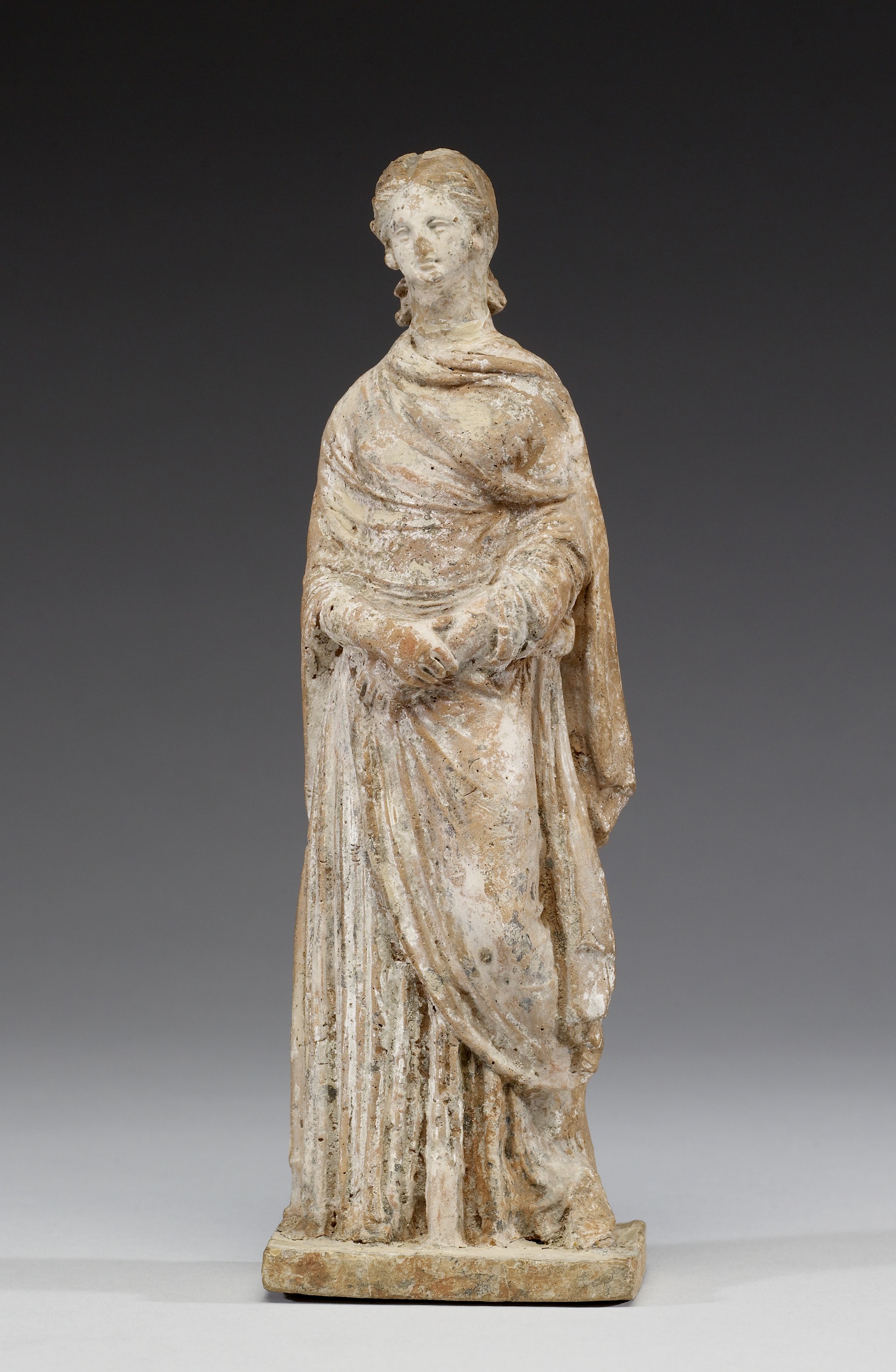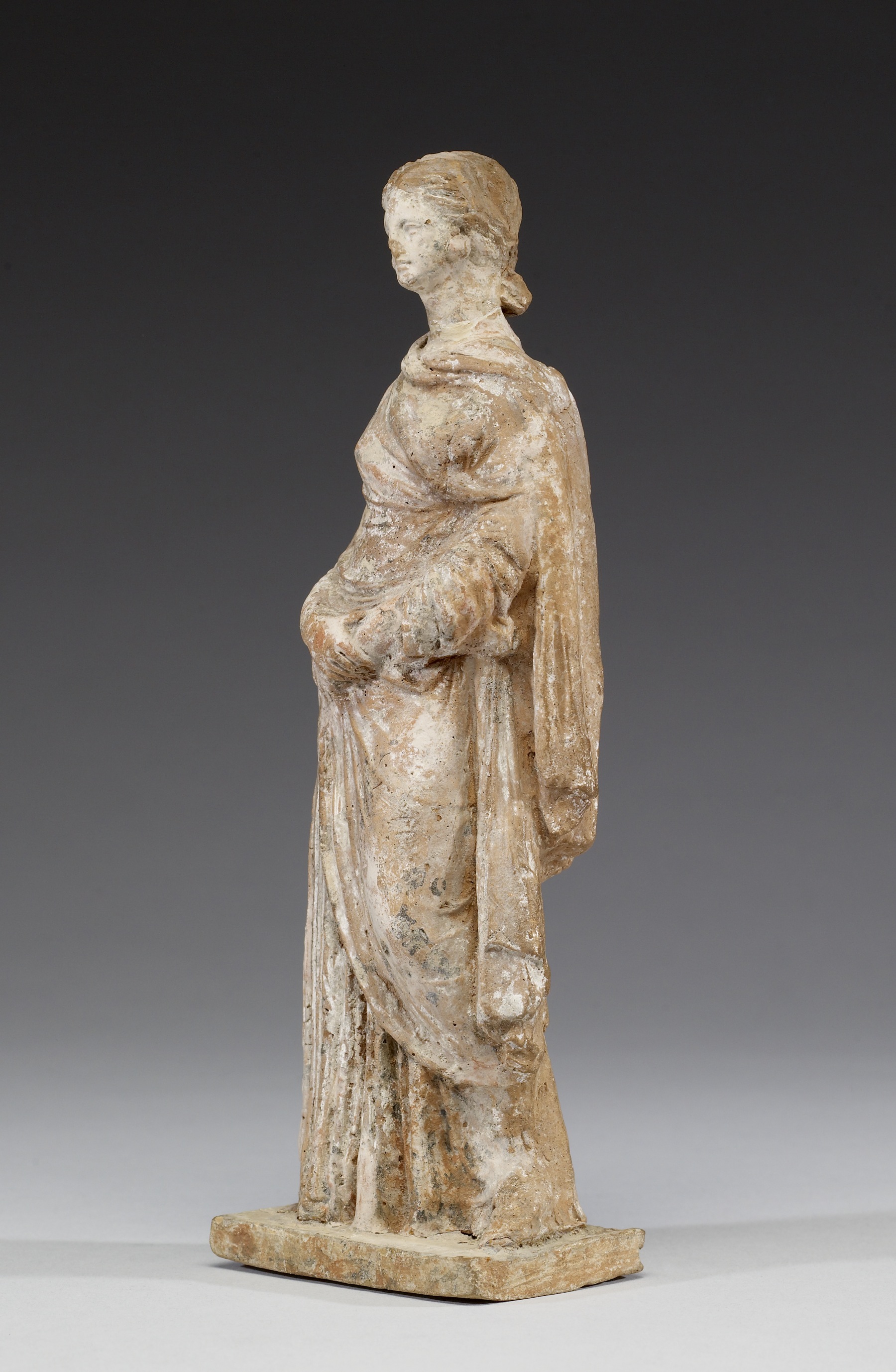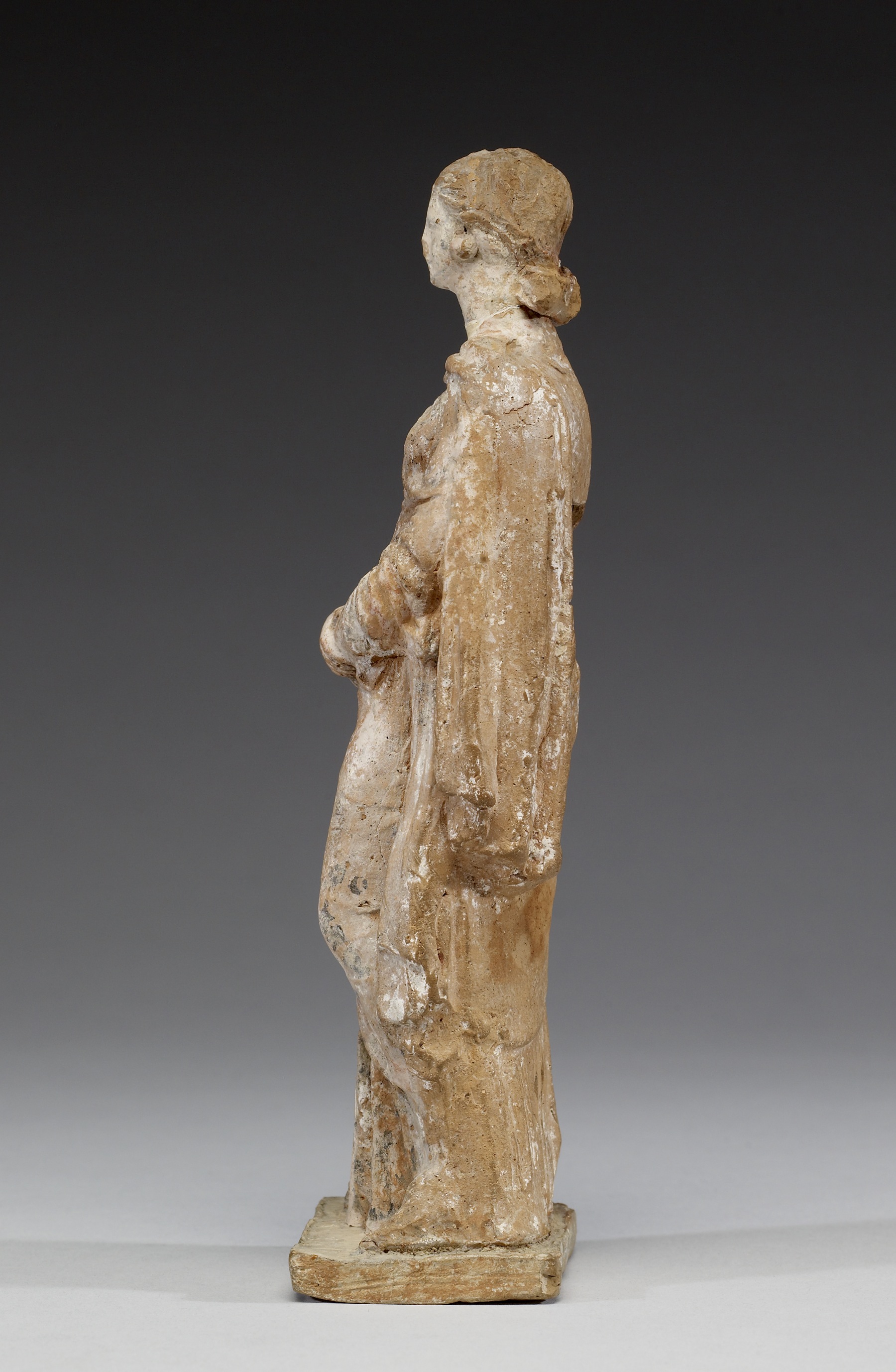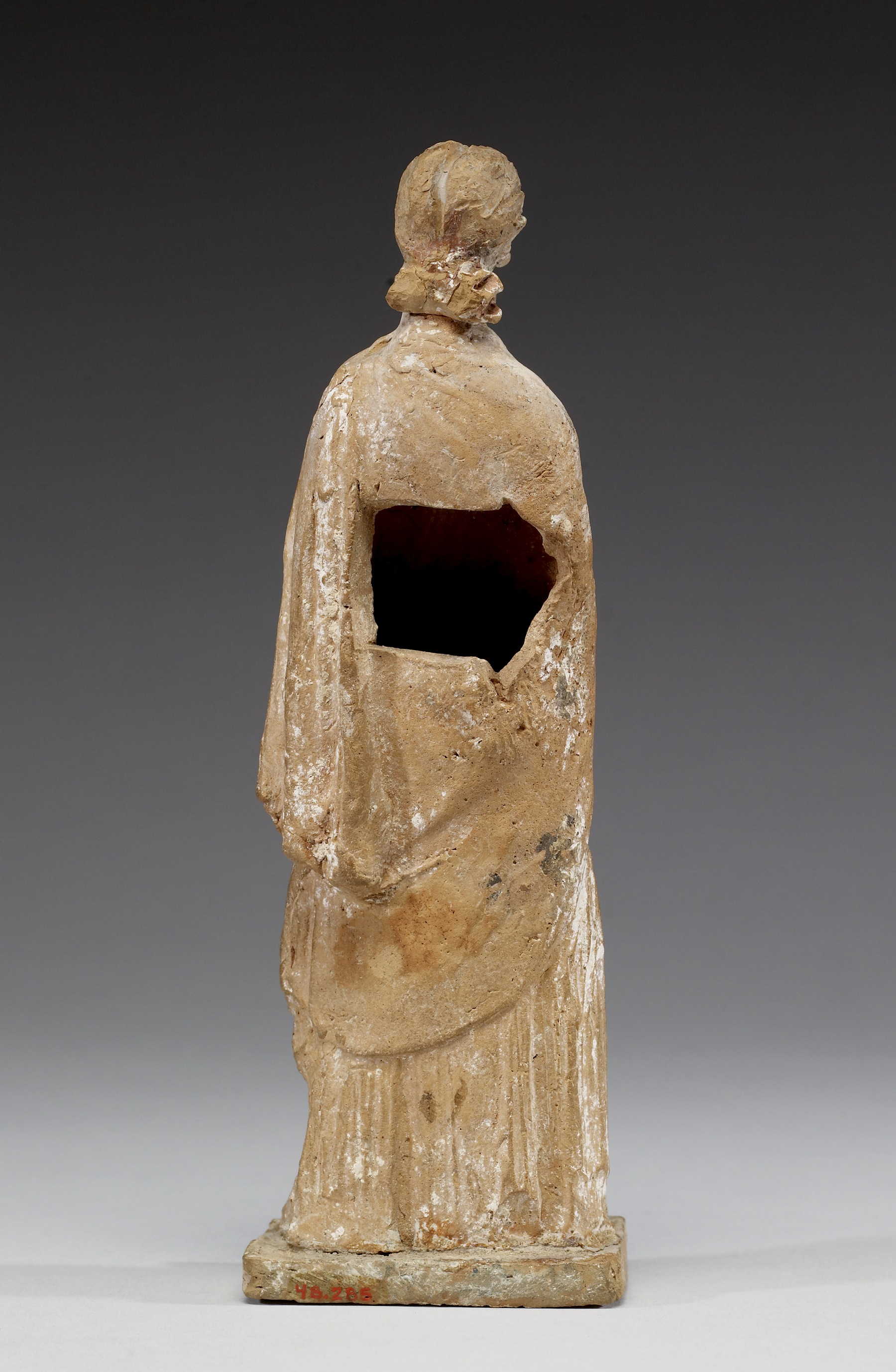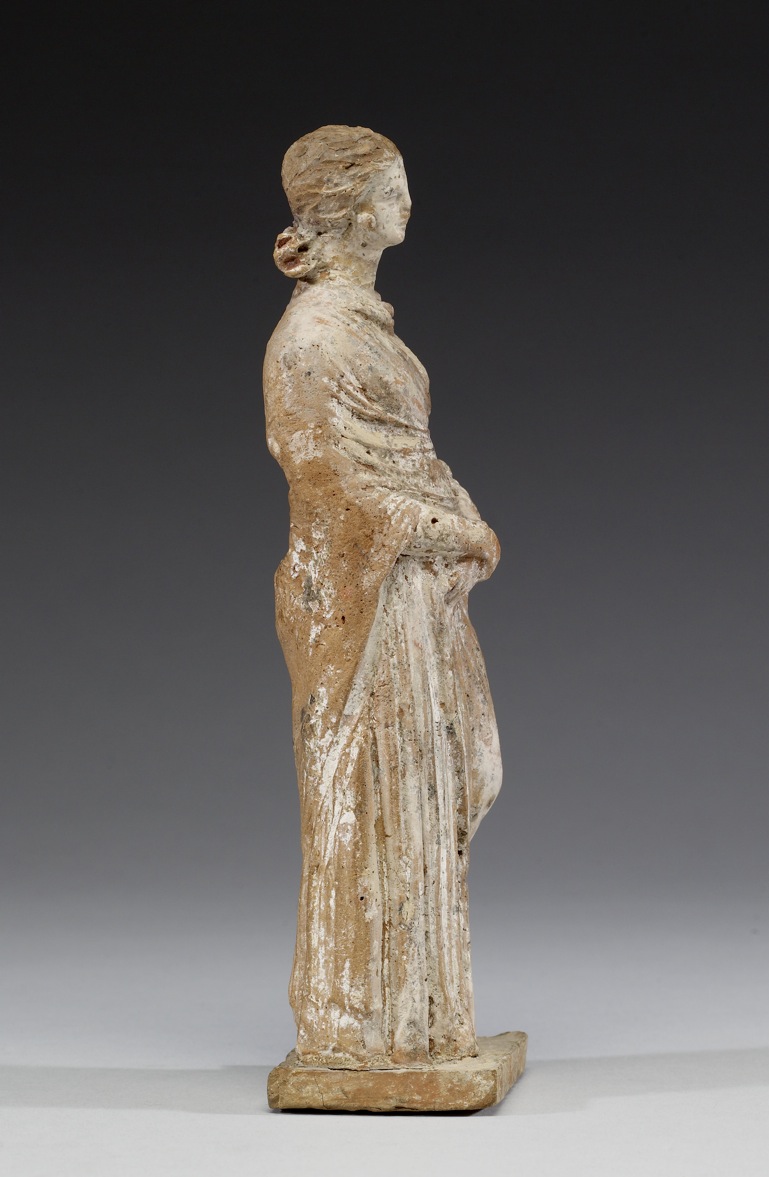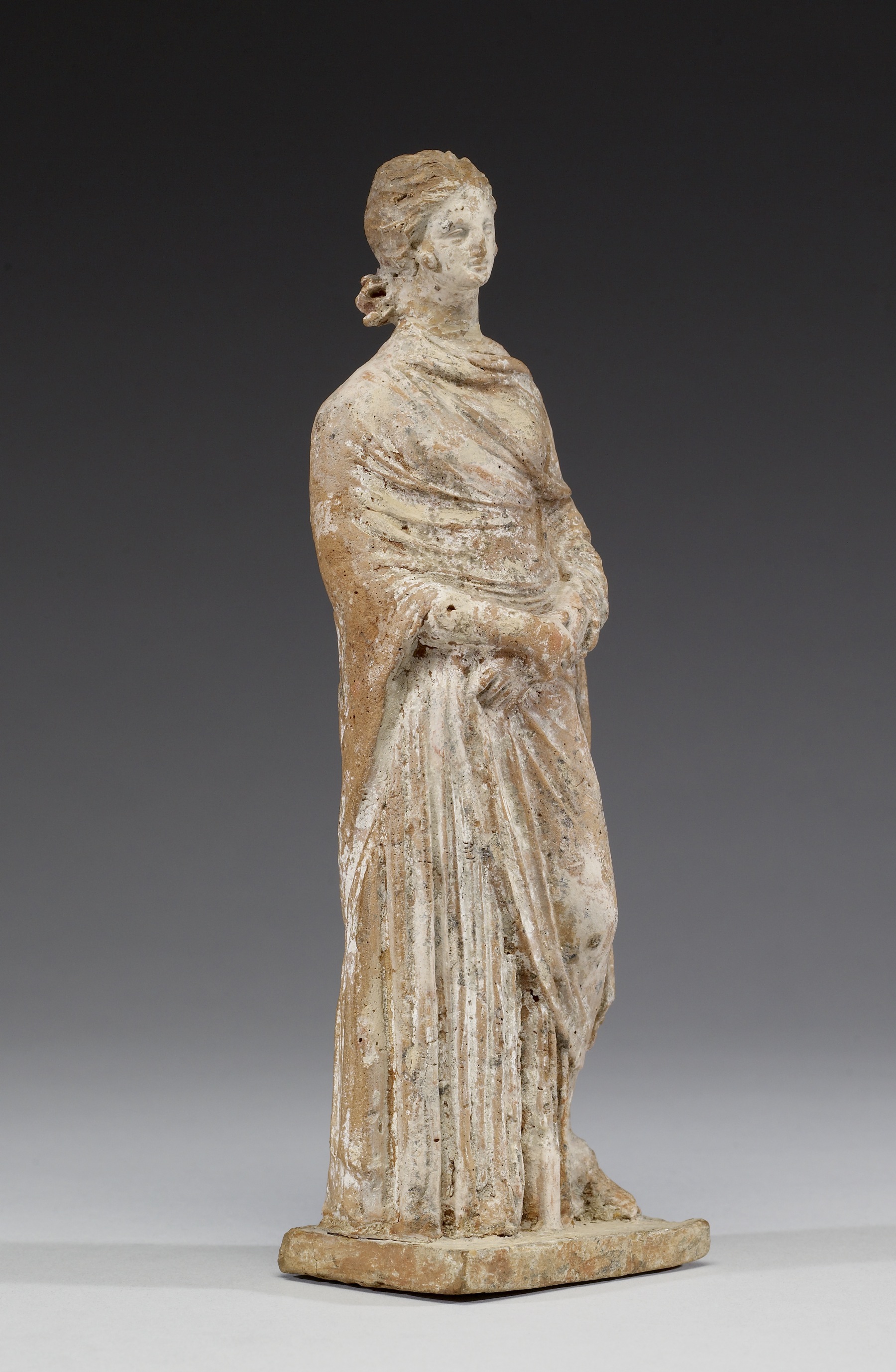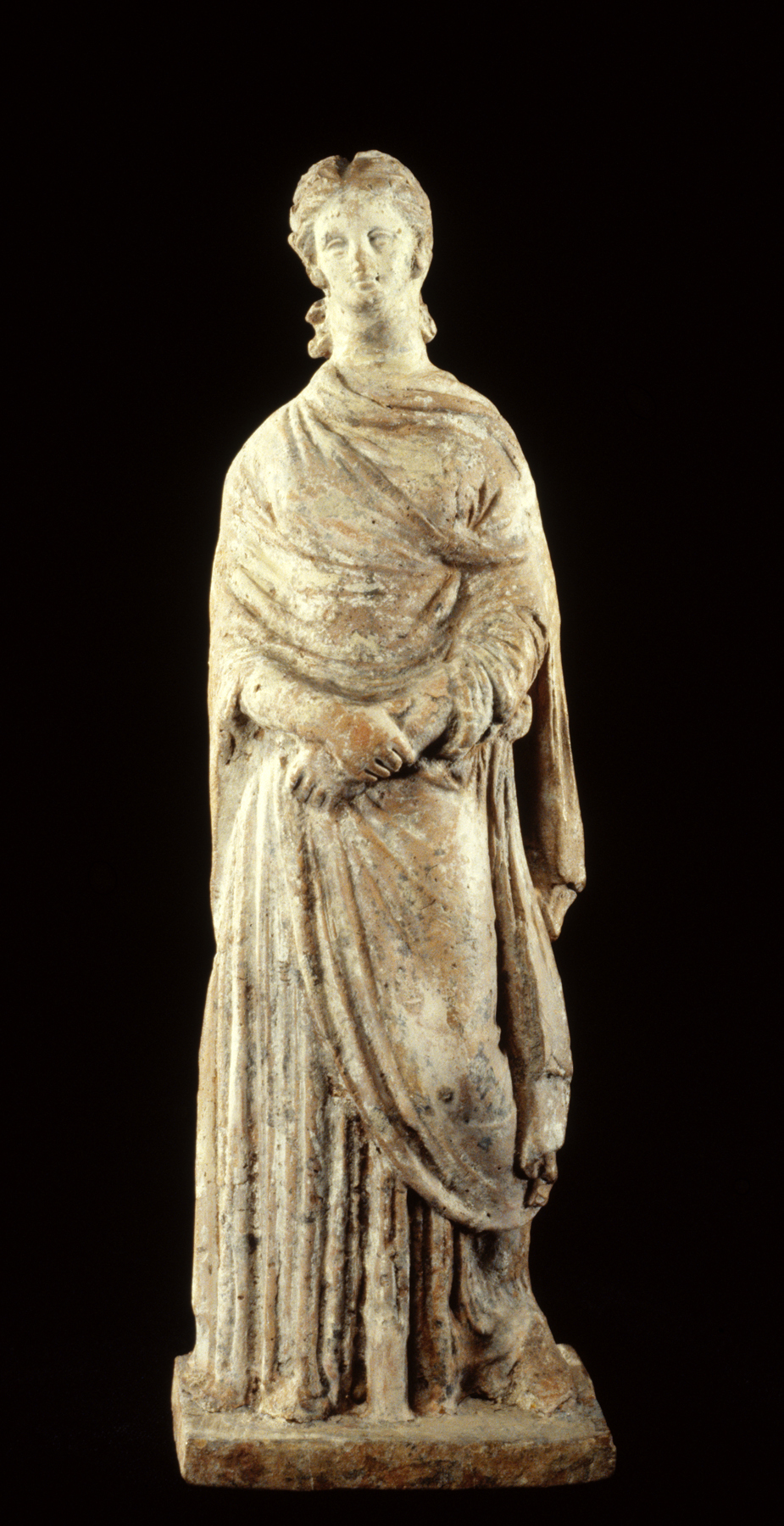Standing Draped Woman with Clasped Hands
(Ancient Greece )
The woman stands frontally with her hands clasped calmly in front of her. Her face is slightly raised, and she wears a serene expression. Her mantle wraps around her torso and is tucked under her left arm. Under the mantle, she wears a long peplos or chiton, the vertical folds of which contrast to the horizontal and diagonal folds of the mantle. Extensive traces of white paint are visible. The statuette stands on a square base.
Although generally referred to as Tanagra figurines after the most famous findspot, Tanagra (modern Schimatari) in Boeotia, Greece, statuettes of this type have been found at other sites in the ancient world, including Myrina and Smyrna (modern Izmir) in Asia Minor. The most common forms of the statuettes depict young women sitting, standing, or in the process of graceful movement, but there are also examples showing men or children. The statuettes were used as grave offerings, votives, decorative objects, and perhaps toys. The hair, clothing, skin, and jewelry of the pieces were originally painted, although most of the colors are presently faded.
Provenance
Provenance (from the French provenir, 'to come from/forth') is the chronology of the ownership, custody, or location of a historical object.
Joseph Brummer, New York, [date and mode of acquisition unknown]; Henry Walters, Baltimore, 1927, by purchase; Walters Art Museum, 1931, by bequest.
Exhibitions
| 1988-1989 | From Alexander to Cleopatra: Greek Art of the Hellenistic Age. The Walters Art Gallery, Baltimore. |
Conservation
| Date | Description | Narrative |
|---|---|---|
| 2/8/1960 | Treatment | repaired; loss compensation |
Geographies
Greece or Turkey, Eastern Mediterranean (Place of Origin)
Measurements
7 7/8 x 2 5/8 x 1 7/8 in. (20 x 6.6 x 4.7 cm)
Credit Line
Acquired by Henry Walters, 1927
Location in Museum
Accession Number
In libraries, galleries, museums, and archives, an accession number is a unique identifier assigned to each object in the collection.
In libraries, galleries, museums, and archives, an accession number is a unique identifier assigned to each object in the collection.
48.285

